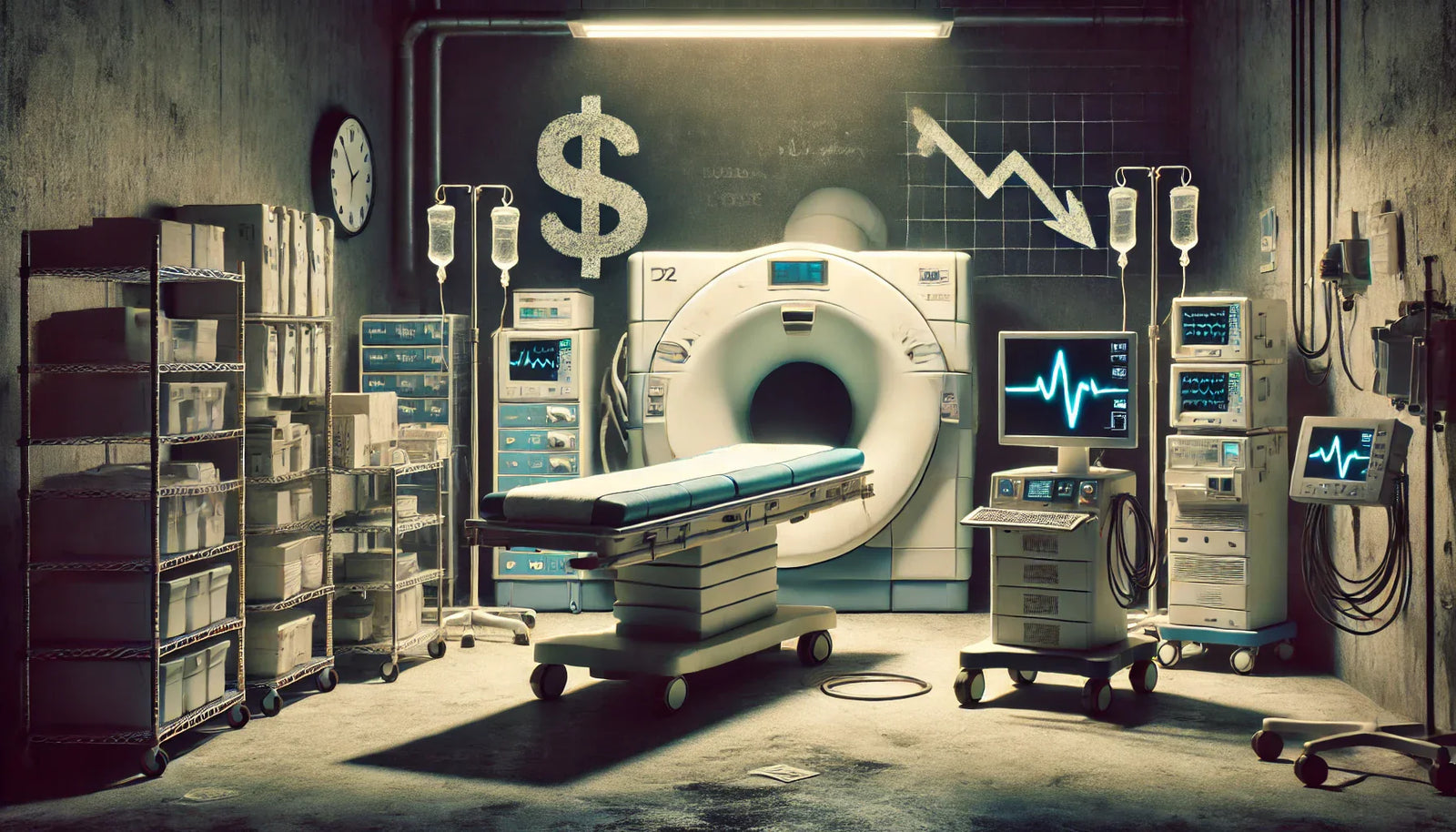Medical equipment is essential to hospital operations, yet many healthcare facilities are unaware of the staggering costs incurred when equipment sits idle or requires frequent repairs. Research indicates that as much as 30-40% of hospital equipment is idle or out of service at any given time, leading to financial losses and operational inefficiencies. In this post, we’ll dive deeper into the reasons for equipment downtime, the financial toll on healthcare providers, and effective solutions to reduce these losses.
The Hidden Costs of Idle Medical Equipment
Beyond the initial purchase price, medical equipment incurs costs whenever it is not fully utilized. According to a GE Healthcare report, equipment downtime can cost hospitals up to $760 per device per day. These costs can quickly add up and include:
- Lost Revenue: Equipment that’s unavailable for patient care leads to fewer procedures, tests, or treatments, directly impacting revenue.
- Maintenance Expenses: Frequent repairs and ongoing maintenance contribute to rising operational costs.
- Staff Inefficiency: When equipment is unavailable, staff productivity is affected, leading to scheduling delays and potentially even patient dissatisfaction.
- Storage and Insurance: Unused equipment still requires storage space and insurance, adding further expense.
Did you know? Studies show that reducing equipment downtime by just 10% can save large hospital networks up to $1 million annually. MedTech Europe highlights predictive maintenance as one of the most effective ways to achieve this.
Top Reasons Why Medical Equipment Goes Idle
Hospitals face numerous challenges in keeping medical equipment functional and in use. Some of the most common reasons include:
- Age and Wear: As equipment ages, breakdowns become more frequent, leading to increased downtime and repair costs.
- Complexity and Training Gaps: Specialized equipment may require specific skills, and without proper training, staff may avoid using it, resulting in underutilization.
- Supply Chain Delays: Waiting for replacement parts or delayed maintenance services can cause prolonged equipment downtime.
- Administrative Oversight: Hospitals may lack efficient asset management systems, leading to misallocated resources and idle equipment.
Financial Impact on Hospitals
Medical equipment downtime significantly impacts a hospital’s bottom line. Here are some concrete figures:
- $3 Billion Loss Nationwide: The American healthcare industry faces a combined financial loss of around $3 billion annually due to idle equipment (Healthcare Financial Management Association).
- $760 Daily Loss per Device: For each idle piece of equipment, hospitals lose approximately $760 daily in lost revenue, repair costs, and storage (GE Healthcare).
- Additional Penalties: Many facilities are also fined or penalized by regulatory bodies if they fail to meet utilization standards for certain medical devices.
Real-World Examples of Idle Equipment Costs
Real-life examples reveal how idle equipment impacts healthcare facilities’ financial health:
- MedTech Europe reports a European hospital network saved over €600,000 by implementing IoT-enabled asset tracking and reducing equipment downtime by 15%.
- In the United States, predictive maintenance has helped a large healthcare provider save $500,000 annually through reduced repair costs and improved scheduling (American Hospital Association).
- Some US hospitals have saved up to 20% on medical equipment costs by shifting from ownership to leasing, which helps avoid idle assets and ensures access to updated technology.
How Can Hospitals Minimize Equipment Downtime?
With rising costs, hospitals are now adopting strategies to reduce equipment idle time. Here are some of the most effective methods:
1. Predictive Maintenance
Predictive maintenance uses data analytics to forecast equipment breakdowns before they occur. By addressing issues early, hospitals can reduce costly repairs and downtime. GE Healthcare notes that predictive maintenance can cut unexpected breakdowns by as much as 30%.
2. Asset Tracking and Utilization Monitoring
Technologies like RFID, GPS, and IoT enable real-time monitoring of assets, allowing hospitals to keep track of equipment and ensure it’s used efficiently. Asset tracking helps reduce idle time and prevents “equipment hoarding,” where departments may retain devices unnecessarily.
3. Leasing and Lifecycle Management
Instead of purchasing, hospitals can lease equipment to avoid the costs associated with aging devices. Leasing ensures access to the latest technology and allows for easy upgrades. Lifecycle management software also helps plan for timely equipment replacements and avoid downtime from obsolete devices.
4. Staff Training and Cross-Department Collaboration
Training programs ensure that staff are comfortable using specialized equipment, preventing underutilization. Additionally, fostering collaboration between departments can reduce equipment redundancies, improve scheduling, and maximize usage rates.
Example: A large hospital in California reported that by improving asset tracking and staff training, it reduced equipment downtime by 10% and increased annual revenue by $200,000.
The Future of Medical Equipment Management
In the future, we can expect further advancements in equipment management technology. Innovations like artificial intelligence (AI) and machine learning are enabling even more accurate predictive maintenance, while blockchain is showing promise in tracking medical equipment usage and ownership. These tools can further reduce downtime and enhance the financial health of healthcare providers.
Conclusion
Idle and out-of-service medical equipment represents a significant financial burden for hospitals, but solutions are available. By adopting predictive maintenance, tracking asset utilization, exploring leasing options, and investing in staff training, healthcare facilities can reduce idle time, increase revenue, and optimize their return on investment.
For more information on how to reduce medical equipment costs and maximize efficiency, visit our homepage at www.med.equipment.

